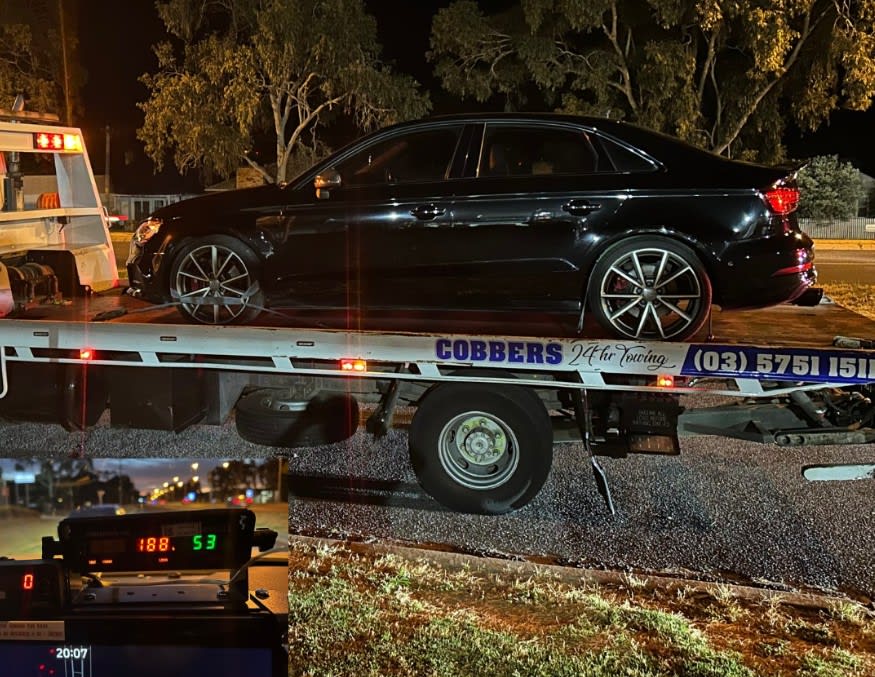By JOHN TAYLOR OAM,
Myrtleford and District
Historical Society Inc.
During World War 1 a sum of 400 pounds was raised by the public of Myrtleford and district for the purpose of erecting a Soldiers’ Memorial Hall.
In 1920, this sum was handed over to the local branch of the Returned Soldiers’ and Sailors’ League of Australia.
Latest Stories
After several attempts to acquire a building, the RSL realised that public assistance was essential.
The league purchased a block of land adjoining where the memorial hall would eventually stand for 65 pounds.
Then, a former prominent resident, Mr Joseph Rothery of Beechworth and Mr AW Foster donated the similarly-sized block next door.
During 1923, a ‘Queen Competition’ was held and raised 400 pounds, followed by a public meeting of 80 residents on April 3, 1924 to form a memorial hall committee of 14 people under the chairmanship of Cr Chas O’Grady.
Plans and specifications were obtained on September 25, and in January 1925 a start was made on foundations.
A memorial tablet was installed in the front wall in May, 1925, to be unveiled at the opening of the hall.
Ongoing fundraising from fetes, balls, house-to-house canvassing, parties and sales of produce totalled 1000 pounds and a further 1000 pounds was borrowed with support from local guarantors.
Members of the public, through the pages of the ‘Myrtleford Mail & Whorouly Witness’ were encouraged to donate cash for bags of cement, lime, any number of bricks or loads of sand and gravel.
In the end, a hall costing 2454 pounds was built.
The hall’s dimensions were 28 x 11 metres, and apart from the main body of the building, included a stage, lobby, two front rooms and a ‘biograph room’.
McKnight of Corowa was the architect and Mr Percy J Edwards, a local bricklayer, laid the ‘60,000 bricks in 60 days’ supplied by Fergusons of Wangaratta.
Carpentry and painting were completed by Robert McGeehan & Sons and plastering by RJ Crane of Beechworth.
A theatrical drop scene ‘Fletcher’s Bridge at Buffalo River’ hung at the back of the stage.
The ‘Mail’ described the memorial hall’s official opening on Tuesday, October 13, 1925 as a “red letter day” for Myrtleford.
“Nature smiled graciously upon the opening ceremony......” and the Rev Major Mitchell, an ex-chaplain during World War 1, “unveiled the memorial tablet, releasing the Union Jack which covered it.”
A laurel wreath was then placed over the tablet.
That evening, a concert party of “refined entertainment” and a dance afterwards was held.
An Old Residents’ Reunion was held the next day, followed by a Memorial Bazaar in the hall on Thursday.
Events concluded with a Grand Memorial Ball on Friday evening; 200 couples attended, which was described as “a busy rendezvous of pleasure seekers”.
Use of the hall was constant.
The ‘Talkies’ (movies) adopted the new venue and regular dances and balls, concerts, meetings, musical productions (including some from the continent) and theatrical performances booked it for use.
In the 1930s, many reunion events and balls to fundraise for special causes such as a new hospital used it, as did the fledging agricultural show committee.
Balls to celebrate the arrival of electricity and a town water supply were also held in the hall.
The most regular use came from movies, with early picture showmen keen to use larger more modern facilities.
By the early 1950s screenings were occurring on three evenings, with a Saturday matinee.
Italian language films were screened from 1954 and by 1963 the movie program changed three times a week (Wednesday to Saturday), with a Sunday film in Italian.
Over time, with changes to social life and customs, construction of new community facilities and the arrival of colour television and other forms of home entertainment, the utilisation of the hall changed.
Introduction of new sound equipment in the 1970s could not arrest the gradual decline in movie attendances.
Italian movie nights ceased in 1984 and in 1992 regular screenings in the memorial hall ceased.
Occupation by the local drama group and occasional special screenings for fundraising by community groups or by schools continued for a limited time.
Since 1925, the hall and its environs have also changed.
A detached supper room had been constructed beside the hall in 1938, together with extensions to the hall stage, and a new foyer, facade and amenities were added in July, 1967.
Lack of regular income eventually led the memorial hall committee to seek assistance from the Shire of Myrtleford, which took over the debt and administration of the building.
In 1992, a $100,000 government grant saw a new frontage, verandah, roof and stage renovations.
This is the building which we pass by today; it holds many memories and awaits a new role in the life of the community.





















